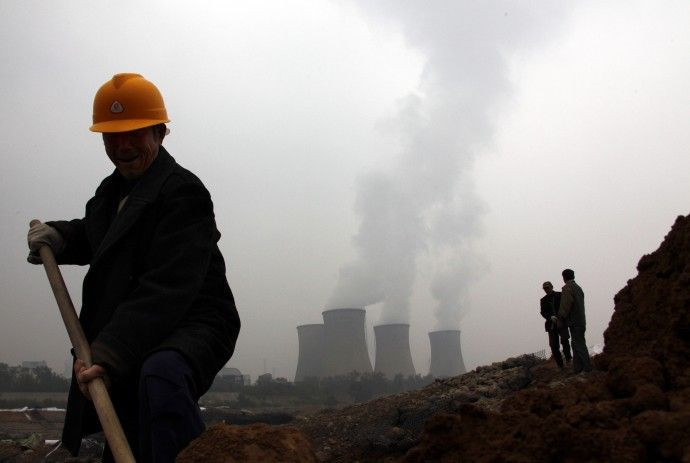Greenhouse Gas Initiative Creates Jobs, Contributes Millions to Economy: Study

In the three years that 10 different U.S. Northeast and Mid-Atlantic states have participated in the Regional Greenhouse Gas Initiative (RGGI), the region is expected to gain more than $1.6 billion in economic value and create thousands of jobs, refuting claims from opponents who insist it would be burdensome and financially unfeasible to require companies to cap greenhouse gas emissions.
According to a study from the Analysis Group, an organization of independent economic, financial and strategy consultants, RGGI -- a cap-and-trade system aiming to reduce carbon dioxide emissions from power generation sources such as coal and natural gas -- investments to this date also created about 16,000 new jobs across the region, reduced demand for fossil fuels and kept more than $765 million in the local economy.
The RGGI agreement requires major power producers to purchase allowances at auction for each ton of carbon dioxide they emit. The report from Analysis, which will be published in the December edition of The Electricity Journal, is the first to track such expenditures from power companies and its resulting impact on electricity prices paid by consumers.
Increased Economic Growth
In a statement Dr. Susan Tierney, one of the lead authors of the report, said the results showed the RGGI generates greater economic growth in every one of the 10 states involved in the agreement -- the six New England states, as well as New York, New Jersey, Maryland and Delaware.
As the first U.S. experiment with a carbon price in electricity markets, RGGI now has produced actual historical data that reveal the concrete economic impacts at the state and regional level, Tierney said.
The $1.6 billion figure is the amount the regional economy is expected to save as the energy efficiency benefits of the RGGI during the period studied are realized, a majority of which comes from savings in electricity, natural gas and heating oil expenses. The study found that companies that produce electricity from fossil fuel sources raised their prices as a result of the cap-and-trade agreement, increasing the demand for electricity powered through wind, sun and uranium and ultimately lowering states' demand for fossil fuels.
We tracked the dollars spent, and RGGI generates greater economic growth in every one of the 10 states that participate in RGGI than would occur without a carbon price. The states' auction of the [carbon dioxide] allowances was important for generating those public benefits, Tierney said.
The carbon charges were designed to make electricity prices slightly more expensive and consequently encourage conservation and drive down demand. The $912 million paid out by electric customers to finance the program is offset by approximately $1.1 billion in electric savings and $174 million in gas savings, according to the report.
Power companies have also spent roughly $912 million purchasing carbon allowances from the states, which was then redistributed and used to fund clean energy initiatives.
Most States Involved Reiterate Support for Program
Most of the states involved in the RGGI have reiterated their support for the program. However, in May, New Jersey Gov. Chris Christie announced the state would pull out of the program at the end of the year, calling the program a gimmick that would not lower greenhouse gas emissions even though his state has received $118 million from money raised by the carbon allowances.
While some of the money was invested in clean energy initiatives, $75 million was reportedly used to close budget deficits during the last year of former Gov. Jon Corzine's term.
Christie, a Republican, has insisted the RGGI places unnecessary costs on consumers due to the higher electricity prices that result. The Analysis report states the investment in clean energy resources championed by the program will eventually lower electricity prices in the participating states, saving about $25 for residential customers on their electricity bills, as well as $181 for commercial customers and $2,493 for industrial firms over the next decade.
Although Chrisitie said the RGGI did nothing more than tax electricity, tax our citizens, tax our businesses, with no discernible or measurable impact on our environment, he acknowledged that consumers cannot expect to save funds as a result of New Jersey's withdrawal from the RGGI.
I don't want to overplay that because we're not talking about a huge difference, he said in a May press conference.
Still, while other governors have supported the RGGI, the program has been challenged from other sides. The New Hampshire congress voted to pull their state from the program, an act that was vetoed by Gov. John Lynch.
New York's participation is currently being challenged in the state Supreme Court.
Whether the RGGI can help offset global climate change remains to be seen. The authors of the Analysis Group report argued the results of the RGGI up to this point are significant since the 10 states involved account for only 6 percent of the nation's carbon initiatives. The authors speculate widespread use of the RGGI or similar programs across the U.S. could be the key to drastically lowering greenhouse gas emissions and establishing a significant clean energy market.
© Copyright IBTimes 2025. All rights reserved.





















